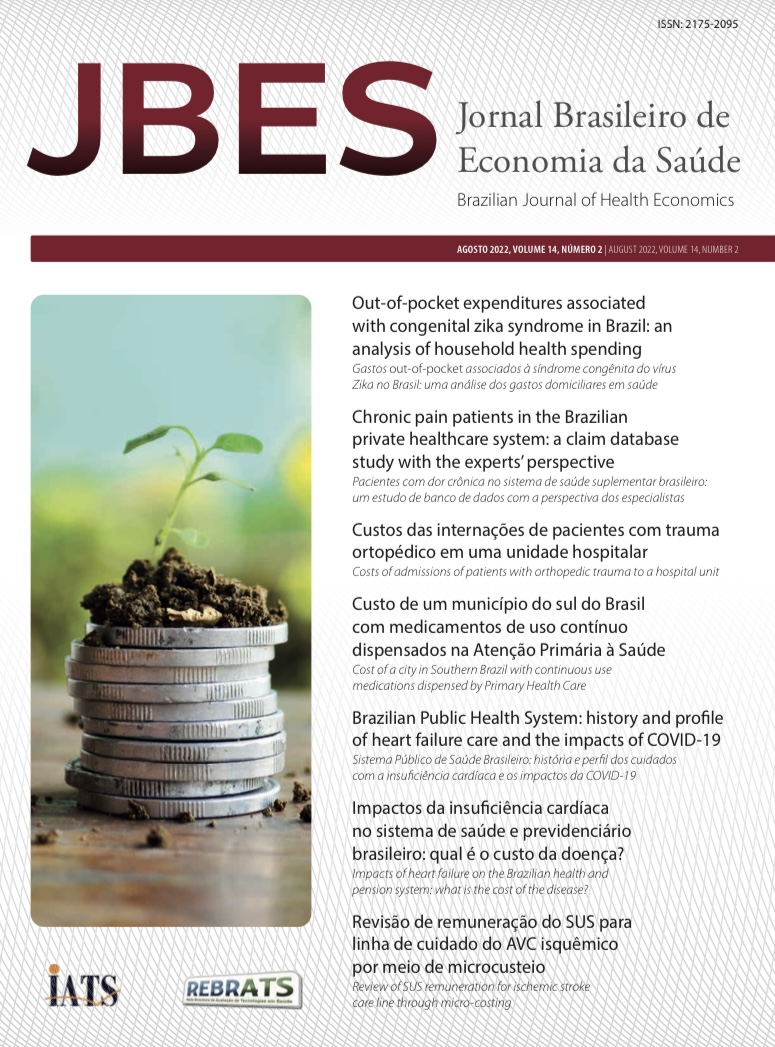Revisão de remuneração do SUS para linha de cuidado do AVC isquêmico por meio de microcusteio
DOI:
https://doi.org/10.21115/JBES.v14.n2.p162-169Palavras-chave:
custo, TDABC, AVCResumo
Objetivo: O objetivo do estudo é medir o custo assistencial por paciente e revisar o ressarcimento do Sistema Único de Saúde (SUS) na linha de cuidado de acidente vascular cerebral isquêmico (AVCi). Métodos: Estudo prospectivo, com 24 pacientes na amostra, na unidade de referência na instituição para tratamento de AVC, no período de novembro/2019 a dezembro/2019. O método utilizado para apuração de custos foi o custeio baseado em atividade e tempo (TDABC), no qual os custos são coletados focando o paciente e os cuidados dispensados durante a assistência. A perspectiva do estudo é a do prestador de serviços do SUS, que se concentrou na avaliação de custos. Foram realizadas as análises de custo total por paciente, componente de custo, custo e tempo por fase na linha de cuidado, custo médio diário e custo médio diário do SUS. Resultados: O custo médio do paciente com AVCi auferido pelo método TDABC é de R$ 14.079,70, sendo a sua maioria justificada em custos de estrutura da unidade de AVC. A atividade com mais custos foi a unidade de AVC e realização de exames. Conclusões: Foi identificado no estudo que os principais contribuintes para a geração de custos na linha de cuidado são as atividades que demandam mais tempo, os medicamentos dispensados e os exames denominados de “alto custo” realizados. Os custos reais aferidos em relação ao ressarcimento previsto pelo SUS e estabelecimentos de saúde credenciados neste estudo demonstram que apenas 39% do custo real está coberto pelo SUS no AVCi.






